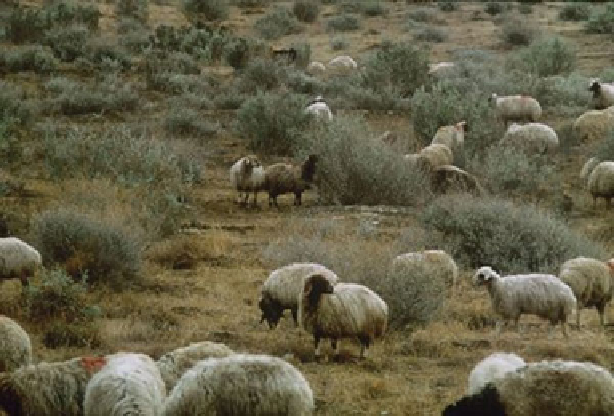Geoscience Reference
In-Depth Information
Fig. 5.5
Planting of long lived drought-resistant hardy perennials into rangeland can provide a
valuable protein supplement during the dry season and a drought reserve.
Atriplex
spp. perform
well (Photo B.E. Norton)
•
Increase animal productivity: animal health and nutrition, better use of genetic
resources including wild breeds, and better access to markets and by-products
•
Improvement of rangelands: rehabilitate degraded rangelands, improve grazing
management.
First, the development of the cactus/
Atriplex
alley cropping in the WANA region
has encouraged the governments of Morocco and Tunisia to invest in agriculture
in dry areas. By increasing and stabilizing fodder reserves, cactus/
Atriplex
alley
cropping can help mitigate drought. The technology is therefore an effective risk-
hedging strategy for drylands. The benefits are expected to spur adoption by farmers
in similar agro-ecological zones in Morocco, Tunisia and other countries. It is
necessary to capture the holistic nature of the problem by integrating economic,
environmental and social aspects.
The most important action to integrate forages into the farming systems was the
ley farming operation. Other actions include promotion of the new feed production
techniques such as fodder conservation, valorization of straw, and utilization of
agro-industry by-products.
Development of productive and sustainable production systems based on small
ruminants, through the integration of feed and livestock production, both within
and across arable and rangeland production systems is a high priority. This would
improve the incomes and welfare of farmers and pastoralists in the low-rainfall
areas of Morocco, while meeting national demands for small ruminant products
and conserving the natural resource base.

Search WWH ::

Custom Search